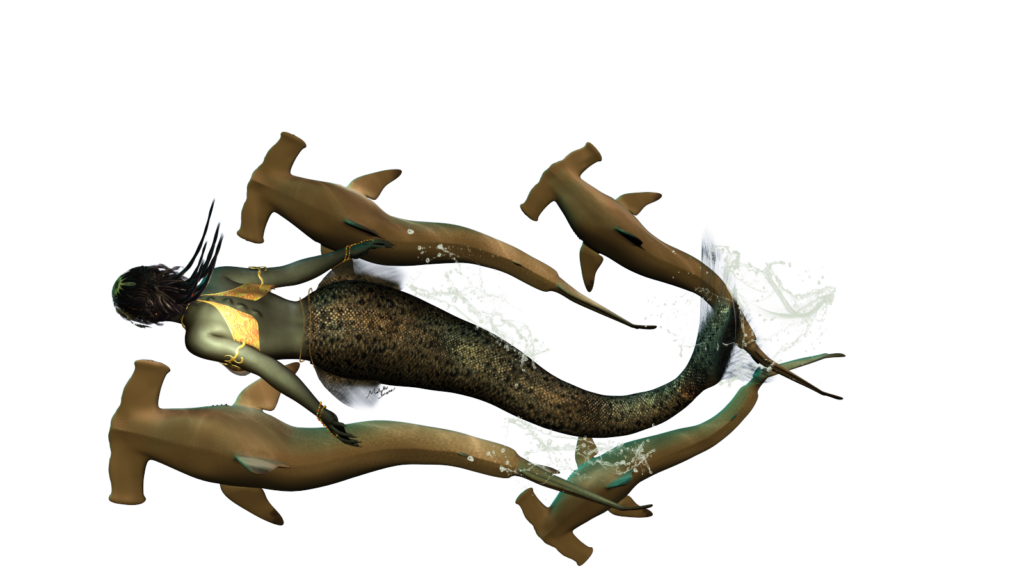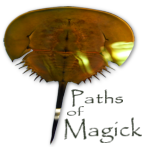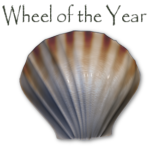
The Principles of Syrenity
The basic principles of Syrenity are a return to being “basic”, a lived and living faith, and a commitment to being wild and alive alongside the Gods and the Invisible Population. Understanding and enactment of these principles happens via gaining the deepest knowledge of our most authentic selves, which we then shine out into the world and the Worlds through the strong and powerful promotion of skill at/in magick, divination, and ritual in service to the world and the Worlds and all persons within them.
- A Return to Being “Basic”
- Perhaps the greatest thing that we can learn from the animistic worldview inherent in the practice of Syrenity is symbiosis. To actually live in symbiosis is to dwell together in the same dwelling. In this case, the “dwelling” in question isn’t just one home or farmstead, but the entire world and even Worlds (the Otherworld), and the “together” includes literally everything and everyone: animals, trees, people, the Gods, the Invisible Population; literally limitless classifications of “beingness”.
- True symbiosis leads to both/and rather than either/or patterns of thinking, belief, and subsequent action because both/and thinking (dualism, of the variety we find in Eastern systems of thought; best exemplified by the Chinese concepts of Yin and Yang) leads to cooperation, which leads to survival, while either/or thinking (dichotomy) leads to competition, which leads to division and things such as constant in-fighting (which destroys infrastructure) and ultimately war (wherein countless people may die).
- All things and beings are “ensouled”, and thus possess “personhood”. If all things and beings possess “personhood”, this in turn intrinsically implies that all of these entities must necessarily be interconnected in some way, in symbiotic communities. Such a belief system demands relationship, and true relationship requires reciprocity, born of a both/and worldview (dualism of the Eastern yin and yang variety), which seeks to communicate and cooperate, rather than an either/or worldview (dichotomy) which seeks to clash and compete. Living in relationship with anyone or anything else further creates a demand for empathy and equity, both of which require emotion. Combined, all of these beliefs utterly negate a utilitarian worldview: it becomes virtually impossible to wish to compartmentalize, sanitize, colonialize, tame, or slay; human motivation ultimately is changed utterly.
- Syrenity operates within a Folkloric Framework which helps to reveal cultural patterns of thought focused upon interconnectedness, communication, and cooperation born from a dualist (both/and) worldview. The renewal of that worldview then eradicates many of the concepts which we find in modern practice which originated with the sole intent of maintaining that previous dichotomous, supremacist, colonialist tone: concepts like “UPG”, “hard polytheism”, and the persistent misuse of the term “cultural appropriation”. We return to a worldview which is intrinsically occultist and mystical, and therein lie the keys to how this becomes “witchcraft” at all.
- Via development of the authentic self, which allows us to finally come to understand our Self within the mundane world, we may also come to understand our place within the greater cosmology of the interconnected Universe (our world and the Otherworld). It assists us in developing a sort of directional awareness, which places the individual at the center, as the axis mundi. This “directional awareness” honors and shows respect to what definitely exists, and then recognizes our relationship to it. It’s about putting ourselves not just on the map, but in the map. It’s about becoming the axis mundi, in an effort to attain or reach the state of being that is Axis Mundi. Such an individualized honoring of the directions becomes a direct expression of our recognition of our place within the world and within the Worlds.
- A Lived and Living Faith
- This Way is faithful. Deeply animistic in our beliefs, we have come to understand that we are not alone here as we float upon these tides. Yes, there are the octopus and the shark, the orca and the albatross, but there are also the “Hidden Folk” (Huldra), Merkind, Trolls, Unicorns, other Kind Wights, and the Gods. And it is These—this Invisible Population—as well as the animals and the trees and the very air which we breathe which sustain us, and faith is bred from that sustenance. Faith is both and at the same time necessary to bring about that state of being sustained in the first place, and also what aids us in maintaining and surviving that sustaining.
- If we go through our lives constantly doubting the sources of that sustenance, much less belittling Them, disrespecting Them, and otherwise discounting Their import, or otherwise trapping Them in the pages of dusty tomes, and in boxes of mankind’s own invention, we cannot and will never truly live; truly shine.
- This is a Way to be lived and breathed, as surely as that exhilaration we feel when we step our first toe into the briny wavelets of the sea, hearts racing as their pounding asks with every beat: “what comes next?” The answer to that question is as deceptively simple as it is incredibly hard-won: authenticity. For though the key to edging through this ocean may be to watch for ripples, bubbles, and scattered flotsam along the shoreline—the tools and techniques of Syrenity as a Way in and of itself—its ultimate destination is knowable only to the one who follows it all the way through, for, at the end of it, what they will find is themself.
- Make no mistake: Syrenity is, at its heart, a form of religious witchcraft, which is also what makes it most deeply occult. A teacher whom we deeply respect once defined occultism as “looking for the united Truth behind and within all things”; in other words, occultism may be understood as the active seeking of interconnected Truth. For most of us, when we hear the word “occult”, we might more immediately gravitate to its dictionary definition: “secret, mysterious, and concealed knowledge of the mystical, magickal, and supernatural”. Adopting the both/and (dualist) worldview of the Folkloric Framework of Syrenity informs us that both of these are true: the united Truth (which is mystical, magickal, and supernatural) is, indeed, hidden, and yet at the same time within all things; it is woven into the very fabric of this thing that we call life, thereby interconnected at every level with us and the universal whole of existence. When we couple this with our initial definition of witchcraft—a communal practice (i.e., which serves the Universal community) which is strong, powerful, and promotes skill at/in magick, divination, and ritual—we arrive at precisely how the Folkloric Framework of Syrenity completely informs this new, modern Way of practice. Culture comes to once again exist as it was rightfully intended: as a continuum. That continuum thereby comes to dictate and define our view of the Gods, returning “hard polytheism” to the annals of dreaded fiction, where it belongs. We can no longer compartmentalize or otherwise attempt to control Who the Gods are, nor attempt to dictate the vocabulary of symbols, archetypes, names, and language which They employ in an effort to communicate with humans. “UPG” stands utterly eradicated, as we cannot deride, excuse, or dismiss as “simple belief” what we have come to actually know. “Cultural appropriation” becomes impossible (or, at the very least, improbable) within a paradigm built upon the necessity for mutuality and respect.
- In its original sense, before it became infected by the dogmatic abuses of its hierarchical and politically-motivated bastard offspring, “religion” meant purely “to bind back” or “to bind again”. That sense of “binding back” and of “re-connecting” means that this is not reconstruction, but instead rejuvenation. Rejuvenation is profoundly organic; it requires the both/and of dualism and the active work of symbiosis in order to effectively occur. Rejuvenation is a bringing of new life; a return to balance.
- A Commitment to Being Wild and Alive Alongside the Gods and Invisible Population
- It is the sources of that faithfulness which make this Way wild, for there is nothing tame about that Invisible Population (inclusive of the Gods). No, They are wild and alive, and walking among us, every minute of every day, and every day, in every way.
- We recognize our fellow humans as identities; as beings; as persons. Some of us even regard animals in the same way. It is only once we realize that these “inanimate things”, such as trees and rocks and rivers and the Sea, are likewise identities or beings that we may begin to afford them the respect they genuinely deserve.
- Recognition that we do not live in a purely utilitarian universe is often the first step into a much larger world. Realizing that a tree is more than potential kindling—that there is an identity and, therefore, souls and personhood there—is the first step towards realizing there might be other, bigger things in the universe, such as Gods and Goddesses.
- This Way invites us to step away from the traditional sanitized compartments of Pantheons and their inherent dogma, instead focusing on Archetypes of the Divine. We find no “tribes” of Gods here, save that unified cohort of the Divine which is willing not only to embrace us, but to likewise be embraced. No one can judge us for our experiences with any of Them, nor those experiences themselves, save our own Selves.
- We live within an interconnected Universe that is wild and alive. There is no denying that we live in a layered universe. Lift a large rock, and you will likely find the ground beneath teeming with life. Dive down through the ocean, and you will encounter steadily more mysterious, awe-inspiring, and diverse types of organisms. In that same vein, mists on a mountain top may momentarily obscure the sun, but somehow we know it is still there. Deep in the mists of primordial time, humanity came somehow to understand that this was true not only of life on our planet, or in the sea, or in the sky, but also of a greater Something Else. As a concept, “reclaiming the wild” almost inevitably requires a return to some source, such as a pristine and primordial landscape and/or possibly also an equally pristine and primordial time. In the case of the Divine, it requires us to return to something even greater: it requires a return to Source.
- There was a time in history when, across cultures, people adopted varied vocabularies for the numinous and, nearly without exception, those vocabularies consisted of what most people of today would consider polytheism: a belief in multiple gods and goddesses. There in that long ago, there was no such thing as “hard polytheism” versus “soft polytheism”; such delineations are a purely twentieth century construct, having developed on message boards in the late 1980s-early 1990s among reconstructionist Pagans. No, the Gods simply were, and syncretism (what many moderns call “soft polytheism”) was generally the rule, rather than the exception.
- Therefore, in Syrenity, we support and sustain what Michelle Iacona has termed the “Shards of God Theory“: at its most basic, this theory implies the concept of an overarching Source Deity (for ease of understanding, we often compare this to the Force in Star Wars), of which all other Gods and Goddesses are basically emanations or “individualized expressions”, or, as Michelle likes to put it, “bite-sized chunks of God that we humans can actually taste and swallow without choking to death on the ineffable.” Each of these “bite-sized God-chunks” has its own agency and personality, both independent of and coexistent with the Source at the same time. (They’re Gods: They don’t have to follow the same rules as us; that’s part of what makes Them Gods!) All manifestations of the Divine are understood as individualized expressions of the Source—that numinous and ineffable Force behind All—though Each have Their Own agency and personalities, both independent of and coexistent with the Source, at the same time. This ontology is based on a combination of years of archaeological research and textual (translation and etymology) Folkloric research, combined with subsequent experiential gnosis.
All material herein copyright 2023 (and forward) Michelle Iacona, Connla Hundr Lung, and other attributed authors.
Thieves and plagiarists will be thoroughly hexed and then prosecuted to the fullest extent of the law!









